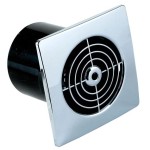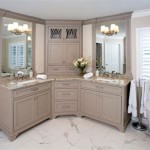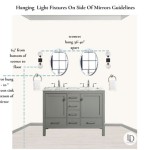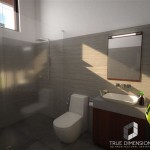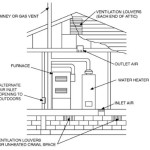Flat Bathroom Sink: A Streamlined Solution for Modern Bathrooms
Flat bathroom sinks represent a significant departure from traditional basin designs, offering a minimalist aesthetic and functional benefits that cater to the demands of contemporary bathroom spaces. Characterized by their shallow depth and often linear or gently sloping surfaces, flat sinks prioritize clean lines and a sleek appearance. This article explores the characteristics, advantages, disadvantages, design considerations, installation requirements, and maintenance practices associated with flat bathroom sinks.
The term "flat sink" encompasses a range of designs, all sharing the common trait of a relatively shallow basin. Materials used in their construction are diverse, including ceramic, porcelain, glass, stainless steel, and composite materials. Each material offers distinct aesthetic qualities and performance characteristics. Flat sinks are often integrated into countertop designs, creating a seamless and visually appealing surface. Their minimalist nature makes them particularly well-suited for modern and contemporary bathroom styles, where simplicity and functionality are highly valued.
Space Optimization and Aesthetic Appeal
One of the primary advantages of flat bathroom sinks is their space-saving design. Due to their shallow depth, they require less vertical space compared to traditional sinks. This makes them an ideal solution for smaller bathrooms or powder rooms where maximizing available space is crucial. In compact bathrooms, a flat sink can contribute to a feeling of spaciousness and openness by minimizing visual clutter. The streamlined profile of a flat sink ensures that the bathroom space appears more organized and less confined.
Beyond spatial benefits, flat sinks offer a distinct aesthetic advantage. Their minimalist design aligns perfectly with modern and contemporary design principles, which emphasize clean lines, simplicity, and functionality. The sleek, uncluttered appearance of a flat sink can enhance the overall aesthetic of the bathroom, creating a sophisticated and visually appealing environment. The availability of various materials and finishes allows homeowners to customize the sink to match their specific design preferences. Glossy ceramic, matte porcelain, or transparent glass provide different aesthetic options for a flat sink, providing versatility in design integration.
Flat sinks are also available in a range of shapes, including rectangular, square, and gently curved designs. This design flexibility allows homeowners to tailor the sink's appearance to complement the overall bathroom decor. A rectangular flat sink integrated into a floating vanity, for example, can create a highly modern and minimalist aesthetic, while a gently curved flat sink might soften the visual impact of a more angular bathroom design. The visual impact of a flat sink is further enhanced by using a single-lever faucet with a matching minimalist design. This ensures a cohesive and harmonious appearance that enhances the bathroom's overall aesthetic.
Functional Considerations and Potential Drawbacks
While flat sinks offer aesthetic and spatial advantages, it is important to consider their functional limitations. Due to their shallow depth, flat sinks may be more prone to splashing compared to traditional sinks with deeper basins. This is particularly true when using high-pressure faucets or engaging in activities that generate significant water displacement. The shallow basin may not effectively contain splashes during vigorous hand washing, leading to water accumulating on the surrounding countertop.
The potential for splashing can be mitigated by carefully selecting a faucet with appropriate water pressure and flow rate. A faucet with a laminar flow aerator can help to reduce splashing by delivering a smooth, non-turbulent stream of water. Positioning the faucet strategically, directing the water stream towards the center of the sink basin, can also help to minimize splashing. The choice of sink material can also influence the severity of splashing. For example, a smooth, non-porous surface may be easier to clean and less prone to staining if water splashes occur.
Another functional consideration is the potential for reduced water capacity. The shallow basin of a flat sink can limit its ability to accommodate large volumes of water. This can be a drawback for activities that require filling the sink, such as washing delicate items or soaking small objects. However, for basic hand washing and teeth brushing, the water capacity of a flat sink is typically sufficient. The compact size of flat sinks can also be an advantage for users who have limited mobility, as they can be easier to reach and use compared to larger, deeper sinks.
The maintenance requirements of flat sinks can vary depending on the material used. Ceramic and porcelain flat sinks are typically easy to clean and maintain, requiring only regular wiping with a mild detergent. Glass flat sinks, however, may require more frequent cleaning to prevent water spots and streaks from accumulating. Stainless steel flat sinks are durable and resistant to staining, but they may be susceptible to scratches if abrasive cleaning products are used. Composite materials offer a balance of durability and ease of maintenance, but it is important to follow the manufacturer's specific cleaning instructions to avoid damaging the surface.
Installation and Plumbing Requirements
The installation of a flat bathroom sink typically involves integrating it into or mounting it on a countertop or vanity. The specific installation method will depend on the design of the sink and the type of countertop material used. In some cases, the flat sink may be undermounted, meaning that it is attached to the underside of the countertop, creating a seamless and visually integrated surface. In other cases, the flat sink may be a drop-in model, which sits on top of the countertop with a visible rim. The choice between undermount and drop-in installation depends on aesthetic preferences and the specific requirements of the countertop material.
Proper plumbing connections are essential for the safe and functional operation of a flat bathroom sink. The drainpipe must be properly aligned and sealed to prevent leaks. The water supply lines must be connected securely to the faucet, ensuring adequate water pressure. The drain system should be equipped with a P-trap to prevent sewer gases from entering the bathroom. It is recommended to consult with a qualified plumber to ensure that the installation is performed correctly and in compliance with local building codes.
The choice of faucet is also an important consideration during installation. The faucet should be compatible with the design of the flat sink and should provide adequate water flow and pressure. Single-lever faucets are a popular choice for flat sinks, as they offer a modern and minimalist appearance. The faucet should be installed at a height that allows for comfortable use, without causing excessive splashing. It is important to follow the manufacturer's instructions when installing the faucet and to ensure that all connections are properly tightened to prevent leaks.
Prior to installation, it is critical to inspect the flat sink and all associated components for any damage. This includes checking for chips, cracks, or other imperfections in the sink material. It is also important to verify that all necessary hardware, such as mounting brackets and drain components, are included in the packaging. If any damage or missing components are identified, it is essential to contact the supplier or manufacturer for replacements before proceeding with the installation. Taking the time to inspect the sink and components carefully can help to avoid costly delays and ensure a successful installation.
In summary, flat bathroom sinks offer a compelling combination of aesthetic appeal and space-saving design, making them a popular choice for modern bathrooms. While their shallow depth may require careful attention to faucet selection and water usage to minimize splashing, their minimalist aesthetic and integration into countertops create a streamlined, visually pleasing effect. Proper installation and maintenance are key to ensuring the long-term performance and aesthetic integrity of a flat bathroom sink. Considering the functional and aesthetic attributes and following installation guidelines are crucial steps in choosing and implementing a flat sink design in a bathroom space.
Finally, flat sinks are a testament to contemporary bathroom design with an emphasis on elegance, space-saving and ease of use. Designers and homeowners alike can utilize these flat sinks to update and optimize bathroom spaces.
Material Choices and Their Implications
The material selection for a flat bathroom sink significantly influences its durability, aesthetic, and maintenance requirements. Ceramic and porcelain are two of the most common choices. Both materials are known for their durability, resistance to staining, and ease of cleaning. Ceramic sinks are typically more affordable than porcelain sinks, but porcelain is generally more resistant to chipping and scratching. Both materials offer a wide range of colors and finishes, allowing homeowners to coordinate the sink with the overall bathroom decor.
Glass flat sinks offer a unique aesthetic appeal, creating a modern and transparent look. Glass sinks are typically made from tempered glass, which is highly durable and resistant to shattering. However, glass sinks require more frequent cleaning to prevent water spots and streaks from accumulating. They may also be more susceptible to scratches compared to ceramic or porcelain sinks. The transparency of glass sinks can also make the drain assembly more visible, which may be a consideration for some homeowners.
Stainless steel flat sinks are known for their durability and resistance to staining. Stainless steel is also a hygienic material, as it is non-porous and does not harbor bacteria. However, stainless steel sinks can be susceptible to scratches if abrasive cleaning products are used. They may also show water spots and fingerprints more readily than other materials. The metallic appearance of stainless steel may not be suitable for all bathroom styles, but it can be a good choice for modern or industrial-themed bathrooms.

Solid Acrylic Flat Wall Mounted Wash Basin

Unique Design Flat Ceramic White Hand Wash Basin China Sink Made In Com

Flat Sinks Are The Only Yo Washbasin Design Bathroom Decor Sink

Quartz Sinks From Giquadro Quadro Flat Line Modern Bathroom Sink Home Decor

Wash Basin Semi Counter Sink White Ceramics With Flat Bottom China Sanitary Ware Made In Com

High Quality Low Bathroom Vessel Sink Flat Green Wash Basin China Sanitary Ware Vanity Made In Com

E Ceramall Buy Stone Basin Ecm Flat Woodland Wash Eceramall

High Quality Low Bathroom Vessel Sink Flat Green Wash Basin China Sanitary Ware Vanity Made In Com

Flat Bathroom Sinks Laufen Living Square

Red Granite Flat Basin
Related Posts


